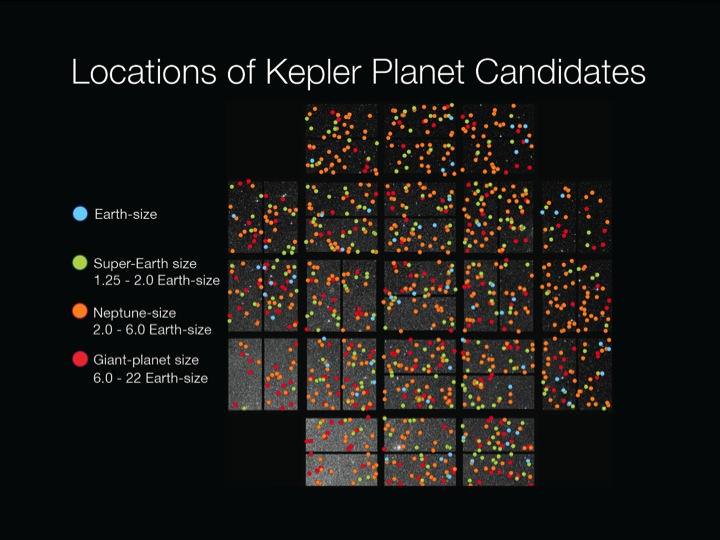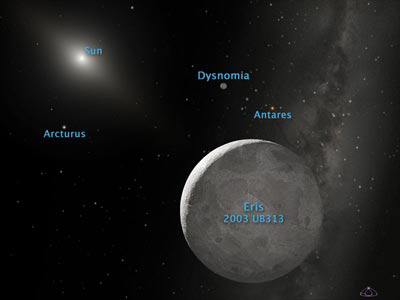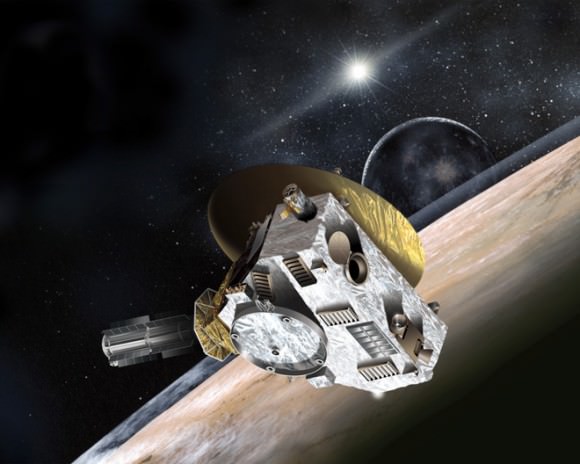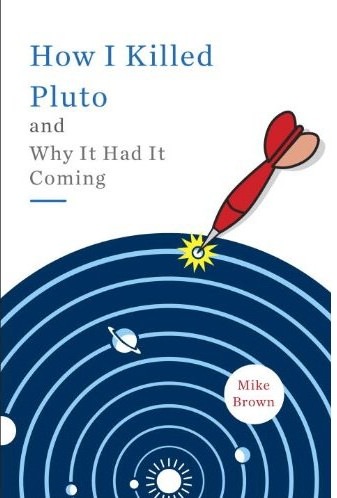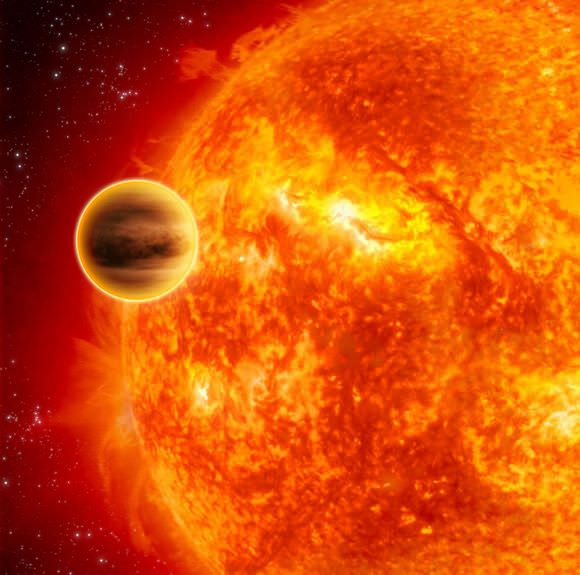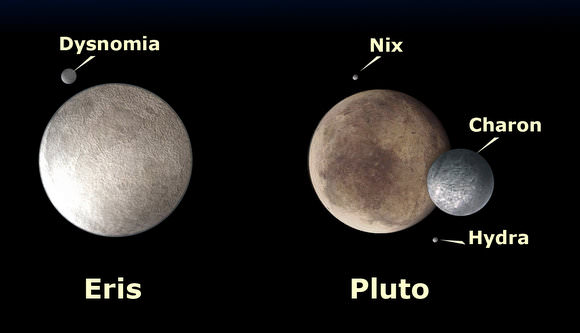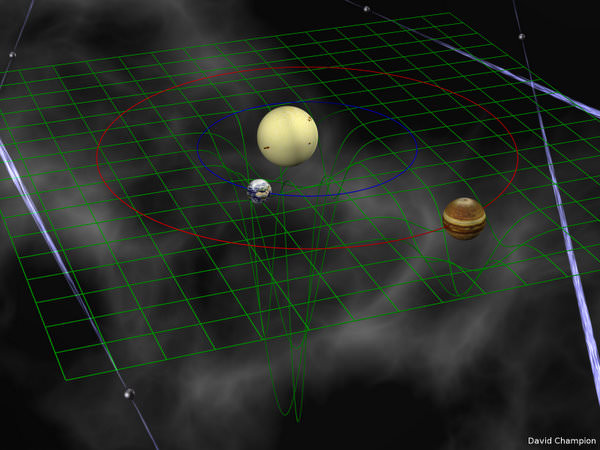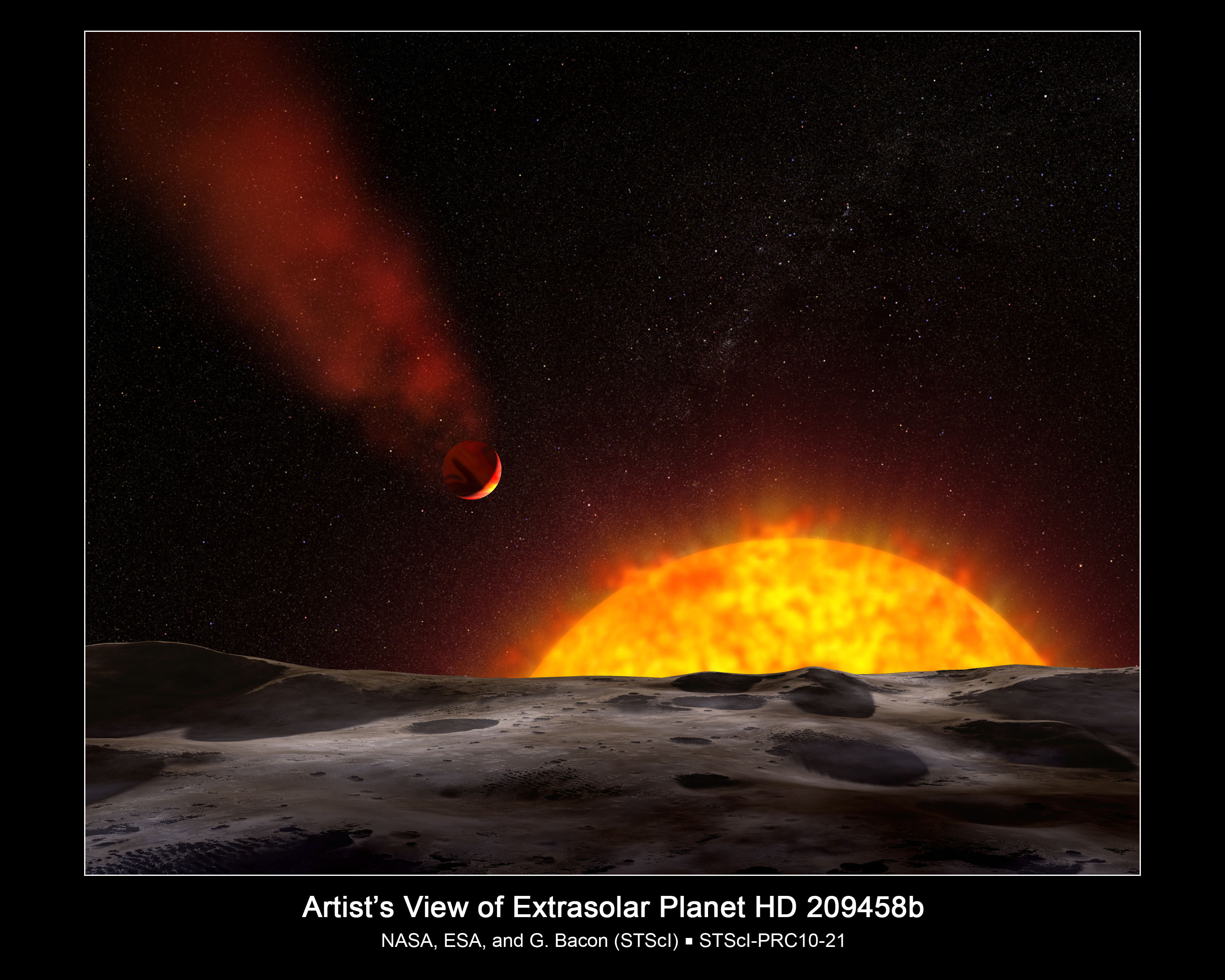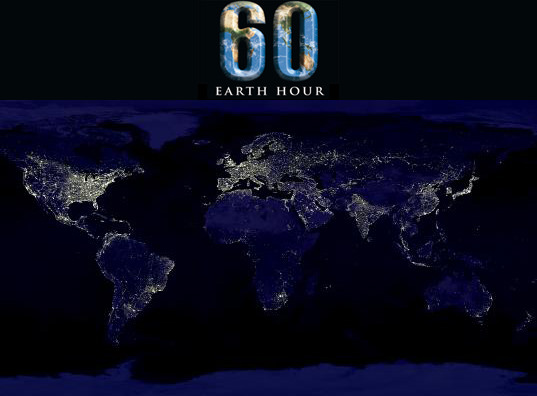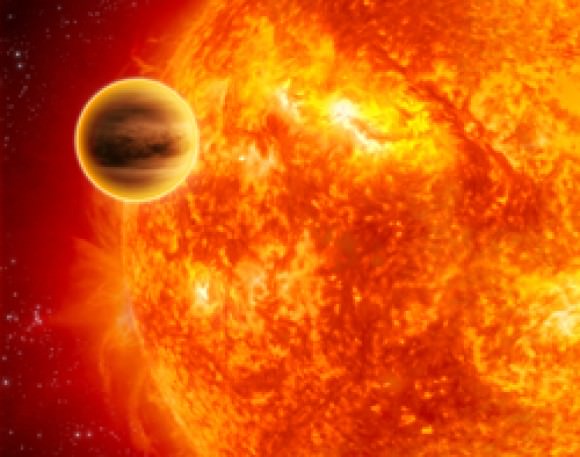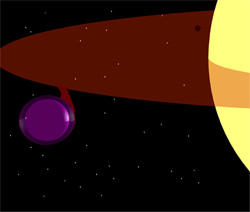[/caption]
With the startling new finding of dozens of Earth-sized extrasolar planets, NASA’s Kepler planet hunting space telescope has just revolutionized our understanding of Earths place in the Universe and the search for Extraterrestrial Life. And the historic science discovery is based on data collected in just the first few months of operation of the powerful telescope as it scans only a tiny portion of the sky.
The discovery of 1235 new extrasolar planet candidates was announced today (Feb.2) by NASA and Kepler scientists at a media briefing. 68 of these planet candidates are Earth-sized. Another 288 are Super-Earth-size, 662 are Neptune-size and 165 are Jupiter-size. Most of these candidates orbit stars like our sun.
Even more significant is that 54 of the planet candidates are located within the ‘habitable zone’ of their host stars and 5 of those are Earth-sized. Before today we knew of exactly ZERO Earth-sized planets within the habitable zone. Now there are 5.
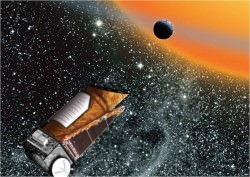 Finding a ‘Pale Blue Dot’ or ‘Second Earth’ inside a habitable zone that harbors water and environmental conditions that can support life is the ‘Holy Grail’ of science.
Finding a ‘Pale Blue Dot’ or ‘Second Earth’ inside a habitable zone that harbors water and environmental conditions that can support life is the ‘Holy Grail’ of science.
Are We Alone ?
“We went from zero to 68 Earth-sized planet candidates and zero to 54 candidates in the habitable zone – a region where liquid water could exist on a planet’s surface. Some candidates could even have moons with liquid water,” said William Borucki of NASA’s Ames Research Center, Moffett Field, Calif.. Borucki is the science principal investigator for NASA’s Kepler mission.
“Five of the planetary candidates are both near Earth-size and orbit in the habitable zone of their parent stars.”
Earth-sized water worlds are the most conducive to the formation and evolution of alien life forms. Water is an essential prerequisite for life as we know it.
“Kepler’s blown the lid off everything we know about extrasolar planets,” said Debra Fischer, professor of Astronomy at Yale University, New Haven, Conn
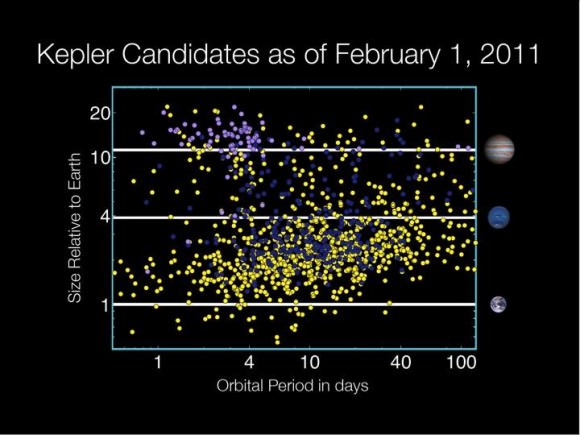
Kepler is the first NASA mission capable of finding Earth-size planets in or near the habitable zones around their parent stars. The mission uses the transit method to detect the tell tale signatures of planets. The goal is to determine how common are planets the size of Earth orbiting inside the habitable zone of stars like our sun.
Kepler measures the miniscule decreases in the brightness of stars caused by planets crossing in front of them and blocking the starlight. Imagine calculating the difference in light transmission caused by a flea sitting on a cars headlight.
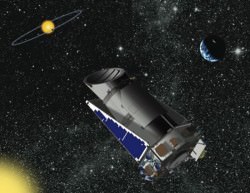
Follow up observations over a period of several years will be required to confirm these results, the scientists explained. Astronomers expect that over 80% of the candidate planets will be positively confirmed as real planets by utilizing ground based observatories and the Spitzer Space Telescope.
For an Earth-sized planet orbiting a sun-like star inside the habitable zone, transits occur about once per year. Since three transits are required to verify a planets status, it will therefore take about three years to reach a definitive conclusion.
These remarkable new planet discoveries are based on observations from only the first four months of Kepler’s telescopic operations – May 12, 2009 to Sept. 17, 2009. The space based observatory continuously monitors more than 156,000 stars using 42 CCD detectors with a field of view that covers only 1/400 of the sky.
“Kepler is making good progress towards its goals,” said Borucki
“We have found over twelve hundred candidate planets – that’s more than all the people have found so far in history.”
“Imagine if we could look wider. Kepler looks at one 400th of the sky. If we had 400 of these fields of view, we’d see 400 times that number of candidates. We would see 400,000 candidate planets.”

“The fact that we’ve found so many planet candidates in such a tiny fraction of the sky suggests there are countless planets orbiting stars like our sun in our galaxy,” Borucki amplified. “Our results indicate there must be millions of planets orbiting the stars that surround our sun.”
“If we find that Earth’s are common in the habitable zones of stars, very likely that means life is common around these stars.”
“Kepler has shown that planetary systems like our own are common,” said Debra Fischer.
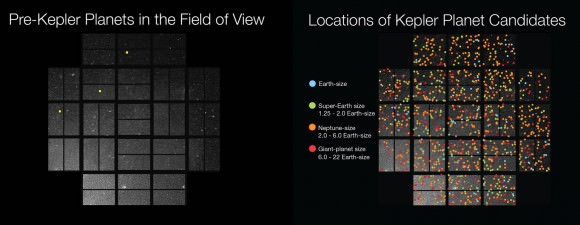
Before and after the discovery of over 1200 planet candidates by NASA’s Kepler Space Telescope.
“The search for planets is motivated by the search for life,” Fischer added.
“We have allowed the public to participate though the website Planethunters.org,” she added. “And now we have over 16,000 dedicated users. The public is excited to be a part of research and history.”
“Thanks to Kepler for this treasure chest of data!” Fisher concluded.
Kepler is just the first step in finding Earth sized and Earth like planets. “We are building the foundation for future generations of explorers,” said Borucki.
“Future missions will be developed to study the composition of planetary atmospheres to determine if they are compatible with the presence of life. The design for these missions depends on Kepler finding whether Earth-size planets in the habitable zone are common or rare.”
The first planets beyond our solar system were discovered in 1995. Up to today there were just over 500 known extrasolar planets.
Kepler now has 15 confirmed extrasolar planet discoveries and over 1200 possible candidates.
In January 2011, Kepler confirmed the discovery of its first rocky planet, named Kepler-10b. The molten world measures just 1.4 times the size of Earth and is the smallest planet ever discovered outside our solar system.
NASA’s Kepler spacecraft was launched on March 6, 2009 from Launch Complex 17-B atop a Delta II rocket at Cape Canaveral Air Force Station in Florida. See spacecraft and launch photos below
Kepler’s science operations are currently funded for three and one half years of operations until November 2012. The mission’s lifetime – and its goal of discovering multitudes of new planets as small as Earth – can be extended if NASA funding is approved by Congress and the President.
William Borucki – Explains Keplers Discovery of Earth Sized Planets
Science principal investigator for NASA’s Kepler mission, NASA’s Ames Research Center
Video Caption: NASA’s Kepler mission has discovered its first Earth-size planet candidates and its first candidates in the habitable zone, a region where liquid water could exist on a planet’s surface. Five of the potential planets are near Earth-size and orbit in the habitable zone of smaller, cooler stars than our sun.
Kepler also found six confirmed planets orbiting a sun-like star, Kepler-11. This is the largest group of transiting planets orbiting a single star yet discovered outside our solar system. Located approximately 2,000 light years from Earth, Kepler-11 is the most tightly packed planetary system yet discovered. All six of its confirmed planets have orbits smaller than Venus, and five of the six have orbits smaller than Mercury’s.
What is an Earth like planet ? Explantion here
David Charbonneau, an exoplanet researcher at Harvard University, explains what scientists mean when they say “earthlike planet” and “super Earth.” This interview was recorded at NASA’s Goddard Space Flight Center on December 10, 2010, by NASA science writer Daniel Pendick.
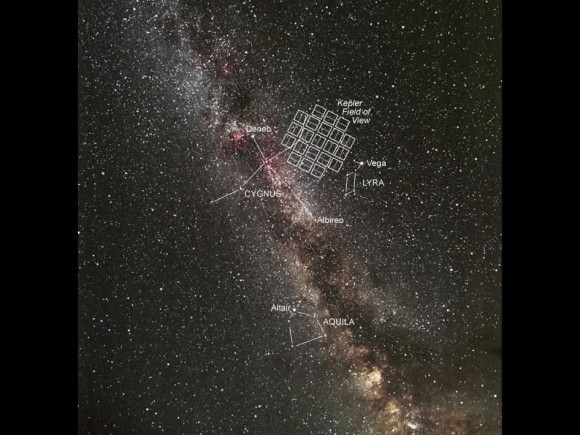
An image by Carter Roberts of the Eastbay Astronomical Society in Oakland, CA, showing the Milky Way region of the sky where the Kepler spacecraft/photometer will be pointing. Each rectangle indicates the specific region of the sky covered by each CCD element of the Kepler photometer. There are a total of 42 CCD elements in pairs, each pair comprising a square.
Credit: Carter Roberts / Eastbay Astronomical Society.
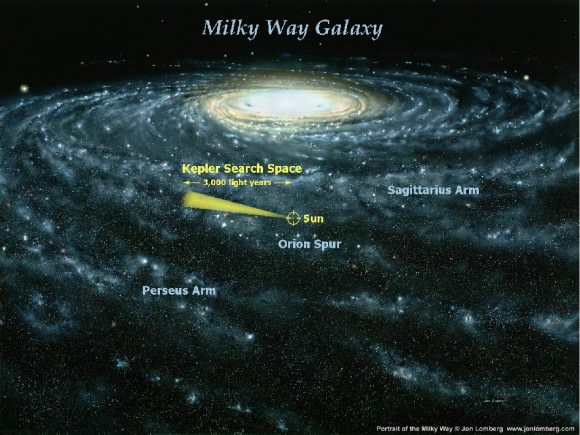
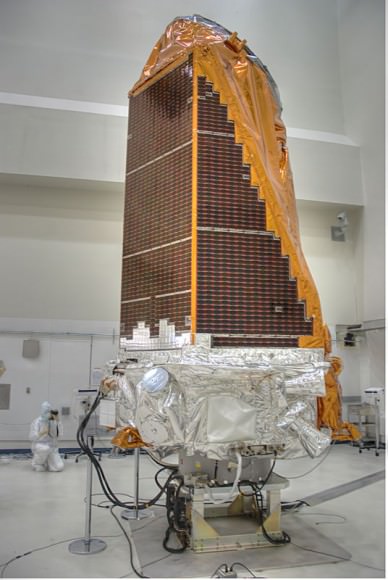
prior to launch on March 6, 2009. Credit: nasatech.net
More Kepler photos courtesy of nasatech.net here

Launch of NASA’s Kepler planet hunting space telescope from Cape Canaveral Air Force Station, FL, Complex 17, on March 6, 2009 at 10:49 p.m. Credit: Ben Cooper
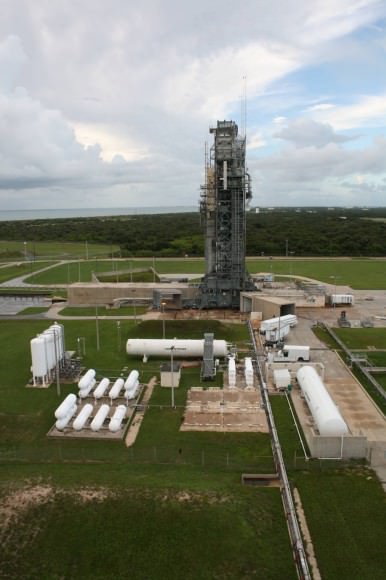
from my perch on the 8th floor of Launch Pad 17 A as rocket is encased in launch tower. Credit: Ken Kremer
NASA’s Kepler Media Briefing on Feb. 2, 2011

